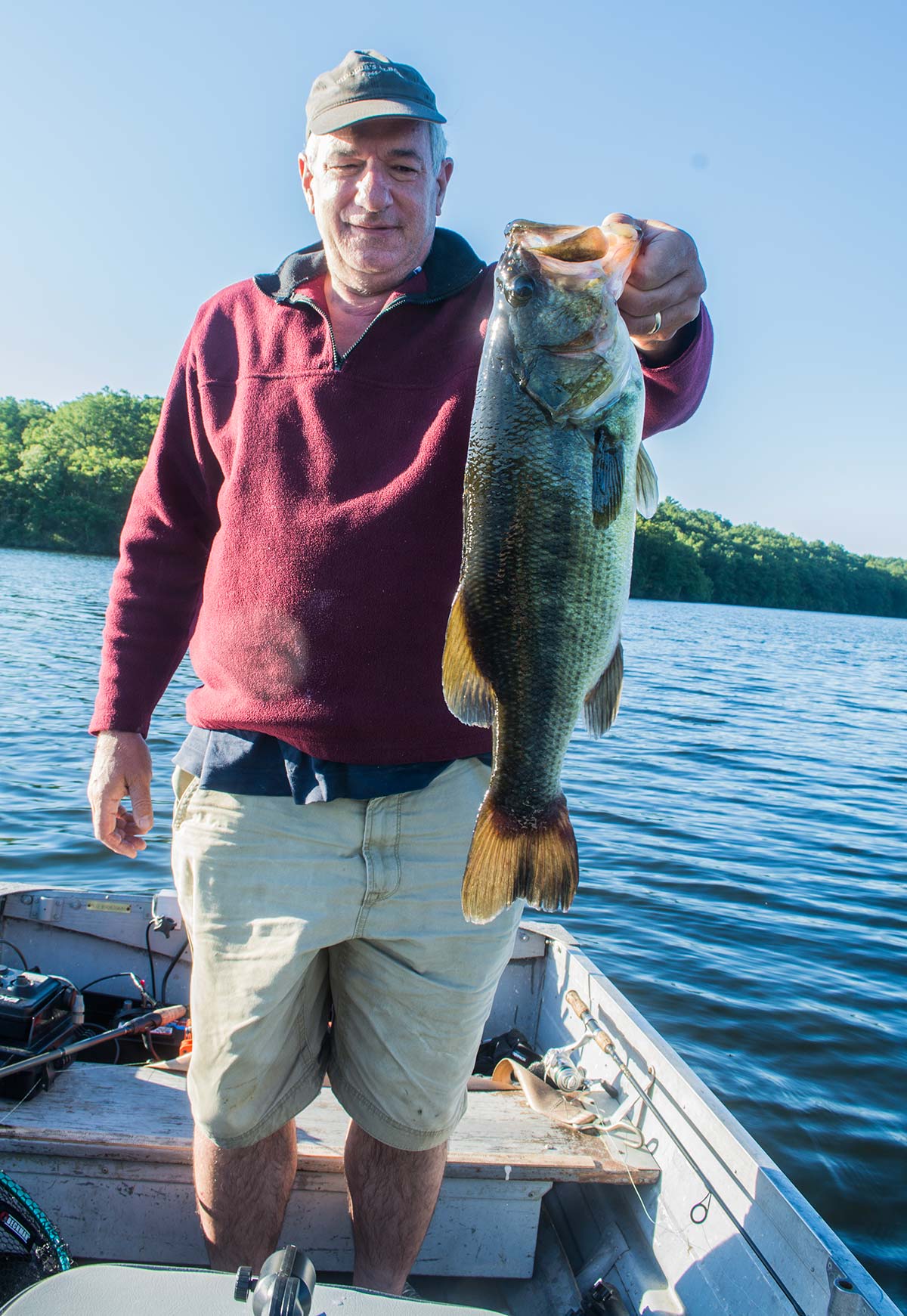
A tactical approach to skinnier areas of big bodied lakes and reservoirs.
Brian Cronk had got a report of smallmouth bass suspended over 40 feet of water. To get a feel for the area, we first trolled crankbaits in close to the shoreline that dropped off into 16-foot depths almost straight down. Then we thoroughly trolled over those 40-foot depths just beyond. Nothing happened.
I had hooked a smallmouth of less than a pound that threw the hooks on a leap while we crossed a shallow flat. A jerkbait navigated through while the Minn Kota transported us towards our goal. But the overriding goal was to catch some nice fish.
I did feel the deep water resembled a spot on a different lake where my son and I had caught suspended summer smallmouths for a few years. And yet, this drop-off was steeper and rubbed me wrong. I kept thinking about lessons learned while reading Fishing Facts magazine during my teens. Sharp drop-offs as winter spots. Metabolically, bass slow down during winter and have less distance to travel from deep to shallow. They don’t swim as much or as far as they do during summer. Long, sloping points, flats, and stream channels accommodate summer bass on the move.
I wondered if the flat we had crossed — 4 or 5 feet deep a hundred yards from shore — sloped off to a flat bottom of about 10 feet of water. The shallows felt exposed because of the water’s clarity. I didn’t expect big fish there, but 10-foot depths would be shadowy. Brian agreed on giving my idea a try, and it wasn’t long before we trolled crankbaits 10 feet down or so, watching the graph closely as we began mapping out an extensive flat that slowly sloped further down into 20- and 25-foot depths. Occasionally, our divers collected weeds. Those weeds favored our chances, too.
When I did hookup, the weight felt immense. I used a medium-heavy, 7-foot Lew’s Speed Stick, 20-pound test Power Pro braid, and a 2000-series spinning reel. By what Cronk tells me, the setup is not ideal, except for the braid. Lighter breaking strength is sufficient, however, where weeds or other cover isn’t thick, but regarding the rod, Cronk uses fiberglass that gives a little when a fish hits. His rod does have plenty of backbone, however, to set the hook while it rests in a rod holder.
The fish I had on certainly was a stubborn one, but when I got it to the net, Brian swished expertly underneath. It had struck a chrome Storm Hot ‘n Tot, a plug that got down to about 10 feet with 60 feet or so of line out. Had I let out more, it could have gone deeper. The less the line diameter, the deeper a crankbait goes, too.
I gripped the lower jaw of the largemouth, stood for a few photographs, and measured it on the yardstick attached to the rear bench. At 21 inches, it’s my best bass from the reservoir yet, but I feel confident about bigger from the same flat that covers a few square acres or so. I feel that way partly because I hooked a bigger fish there on another trolling pass the same evening. Brian had told me about 30-inch pickerel caught in the reservoir, and judging by the power of a searing run, the fish probably was one. We thoroughly cast the area where it vanished, hoping one or two other fish were nearby, but although casting seems a good idea after hooking up on the troll, nothing happened.
I like a flat with weeds sparse enough to allow, for the most part, the clean trolling of crankbaits. Catching weeds here and there shouldn’t be too aggravating, but if a flat has thick weeds, fish topwaters or unweighted plastic worms.
Otherwise, bass, pickerel, even muskies in some water bodies, use open flats during the summer where just a little aquatic vegetation helps attract forage. Gamefish pursue such forage while on the move during the warm months. By comparison, a cove is an enclosure that gives them nowhere further to go. And yet, as they work in a cove, topwaters over a flat will produce early and late in the day when the surface is calm.



